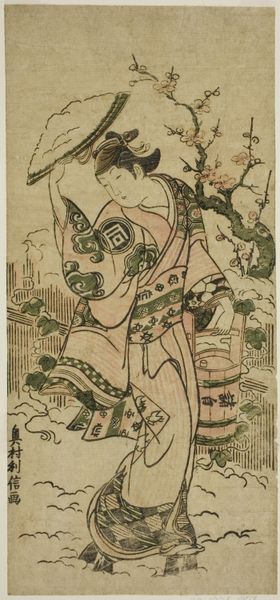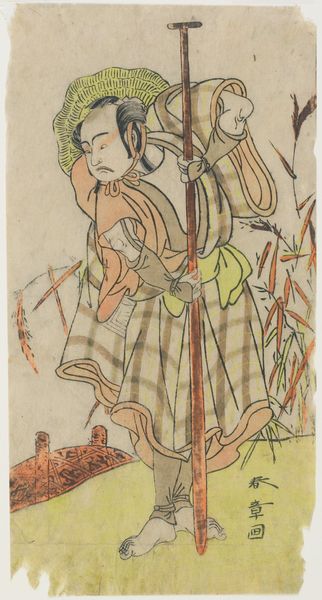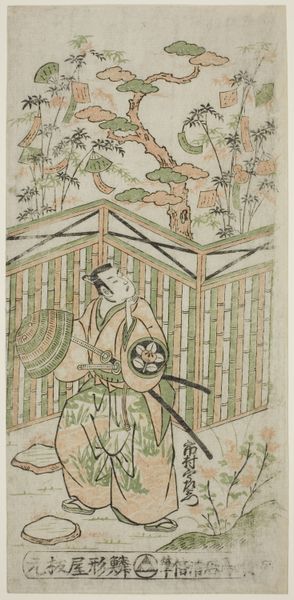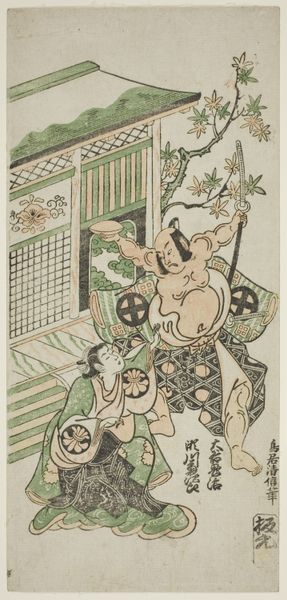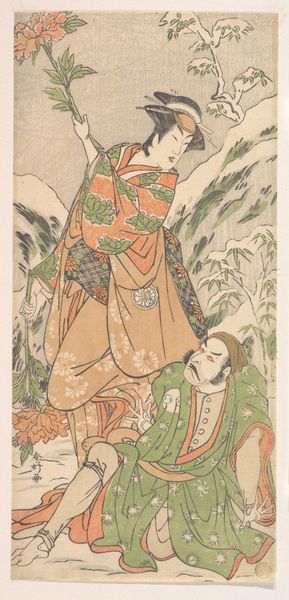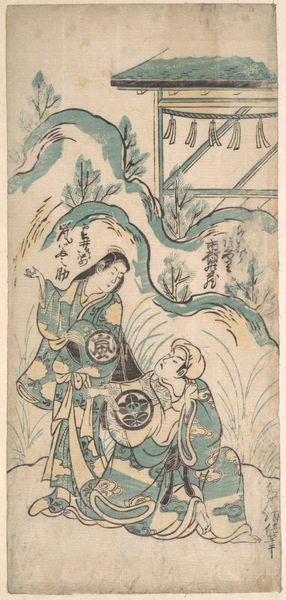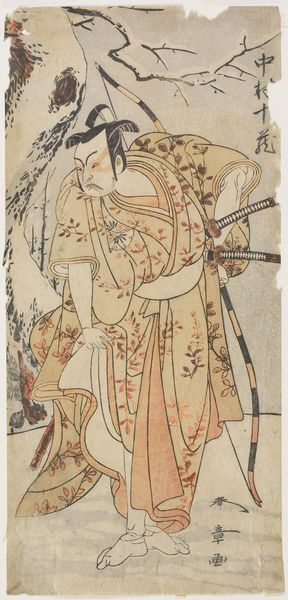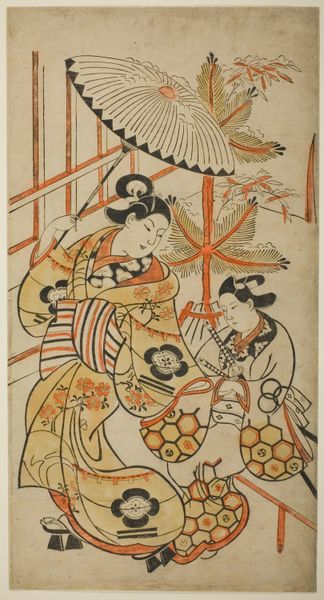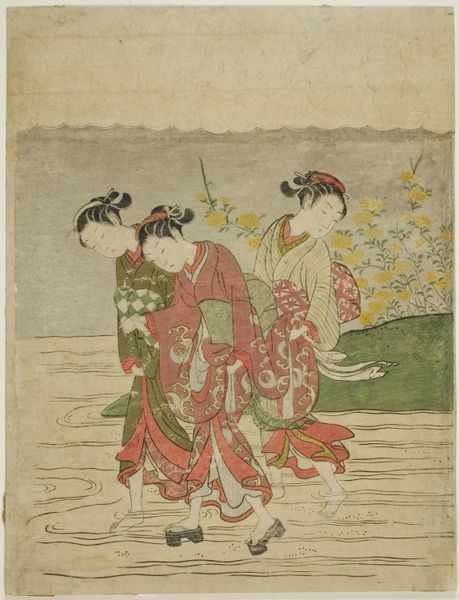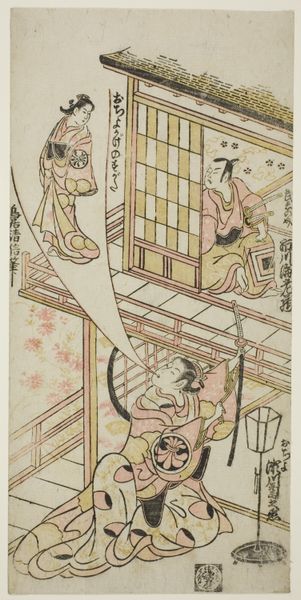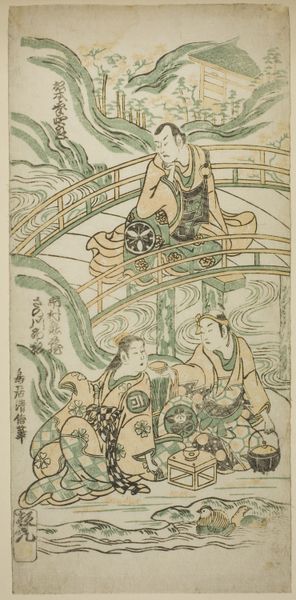
The Actors Segawa Kikunojo I as Ochiyo and Matsushima Kichisaburo as Ochiyo's spirit in the play "Higashiyama Gojitsu Yaoya Hanbei," performed at the Nakamura Theater in the eighth month, 1744 1744
0:00
0:00
print, woodblock-print
# print
#
asian-art
#
ukiyo-e
#
figuration
#
woodblock-print
Dimensions: 31.8 × 15.2 cm (12 1/2 × 6 in.)
Copyright: Public Domain
Curator: This vibrant woodblock print, crafted in 1744 by Torii Kiyomasu II, captures a scene from the play "Higashiyama Gojitsu Yaoya Hanbei." Titled "The Actors Segawa Kikunojo I as Ochiyo and Matsushima Kichisaburo as Ochiyo's spirit," it’s currently held at The Art Institute of Chicago. What are your first impressions? Editor: It feels...fragile, yet theatrical. There's a distinct layering of realities, like dreams folding into a stage play. The colors are muted, yet the composition pulsates with a strange energy. It makes me think about the fleeting nature of performance and memory. Curator: Absolutely! The actors are immortalized within this slice of performative time, forever enacting their roles. The visual layering suggests a connection between the mortal and spectral realms. Ochiyo's spirit, floating ethereally, highlights the ephemeral nature of life and the enduring power of storytelling. You almost feel you could write it your own way! Editor: I notice how Kiyomasu uses line and color to differentiate the earthly from the otherworldly. The bolder lines and earthy tones define the living actor, while softer lines and lighter hues suggest the insubstantiality of the spirit. Is that the 'ukiyo-e' style in action, translating fleeting moments into enduring art? Curator: Precisely! The ukiyo-e tradition revels in capturing fleeting moments of beauty and transience, often focusing on actors, courtesans, and scenes from daily life. There's an incredible stylized exaggeration too. Segawa Kikunojo, who played female roles, possesses this exaggerated feminine grace, with elongated limbs and poised gestures – further blurring the line between performance and reality, just like a hallucination made visual. Editor: The lantern and the foliage also contribute to that dreamlike atmosphere. They seem to hover, unmoored, as though the entire scene is taking place in a liminal space between worlds. Almost, you might say, what makes it feel real is not real. The stage, yes, but really somewhere else. Curator: A perfect encapsulation! And so typical of prints from that time, too. I mean the floating ephemera and the hint that the stage may indeed be a place where multiple selves coexist. Perhaps in the next iteration of viewing the piece we can talk of theater’s long and vexed history with dreams, the subconscious, and, dare I say, that very Japanese fear that identity is less 'carved in stone', and more up for grabs. Editor: Well, this peek has made me consider how art—like theater—holds the power to conjure spirits, question our grasp on reality, and expose hidden layers. I came for woodblock and actors, but leave wondering where the footlights end and shadows begin.
Comments
No comments
Be the first to comment and join the conversation on the ultimate creative platform.
